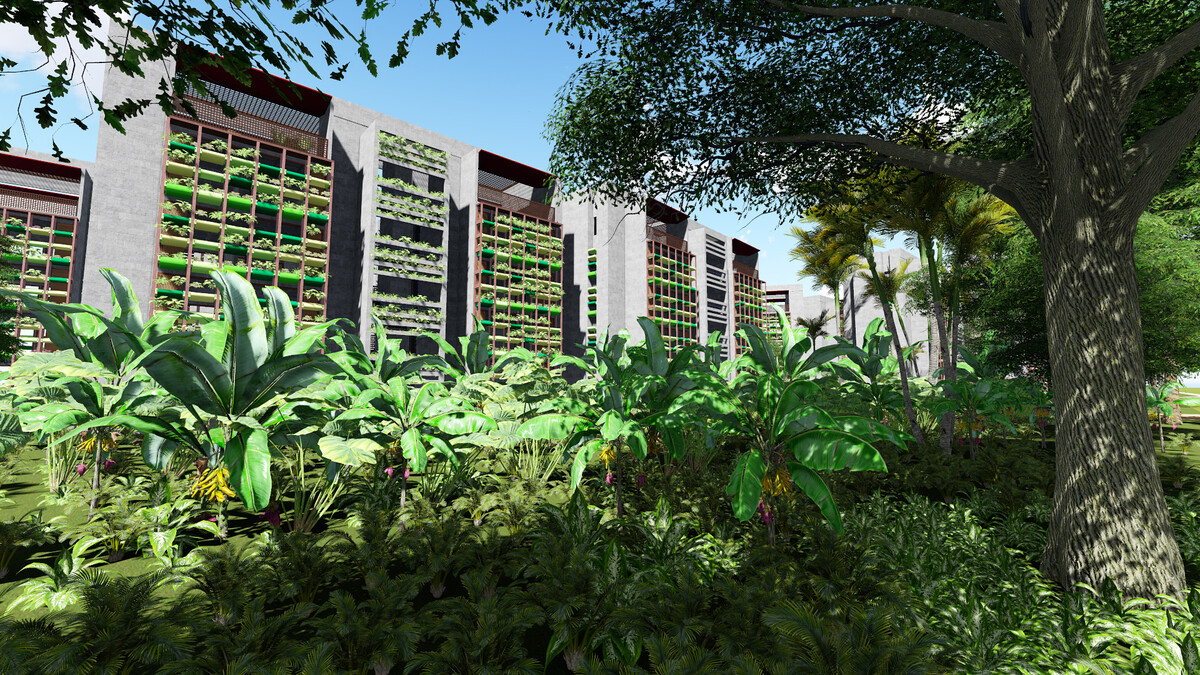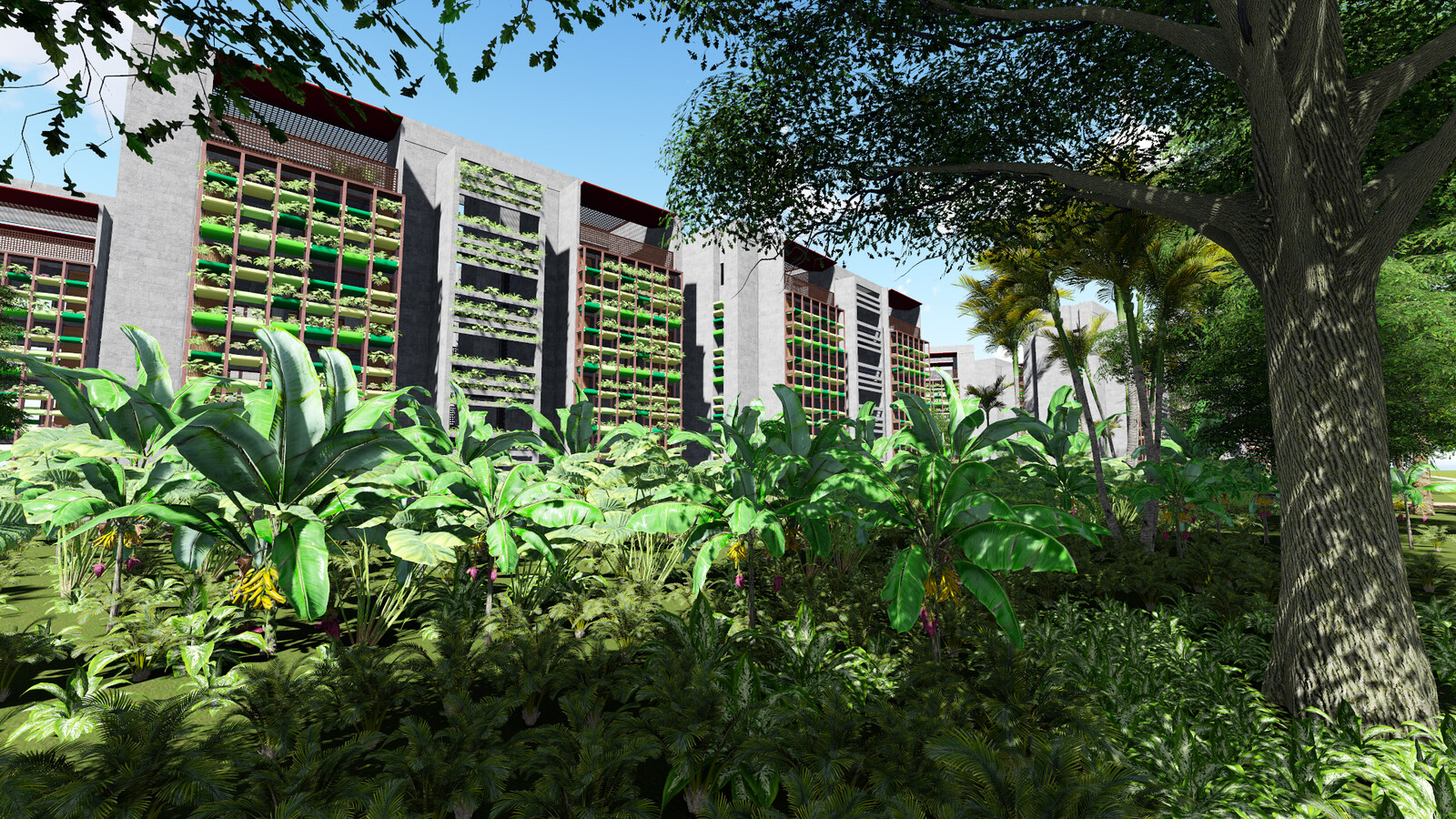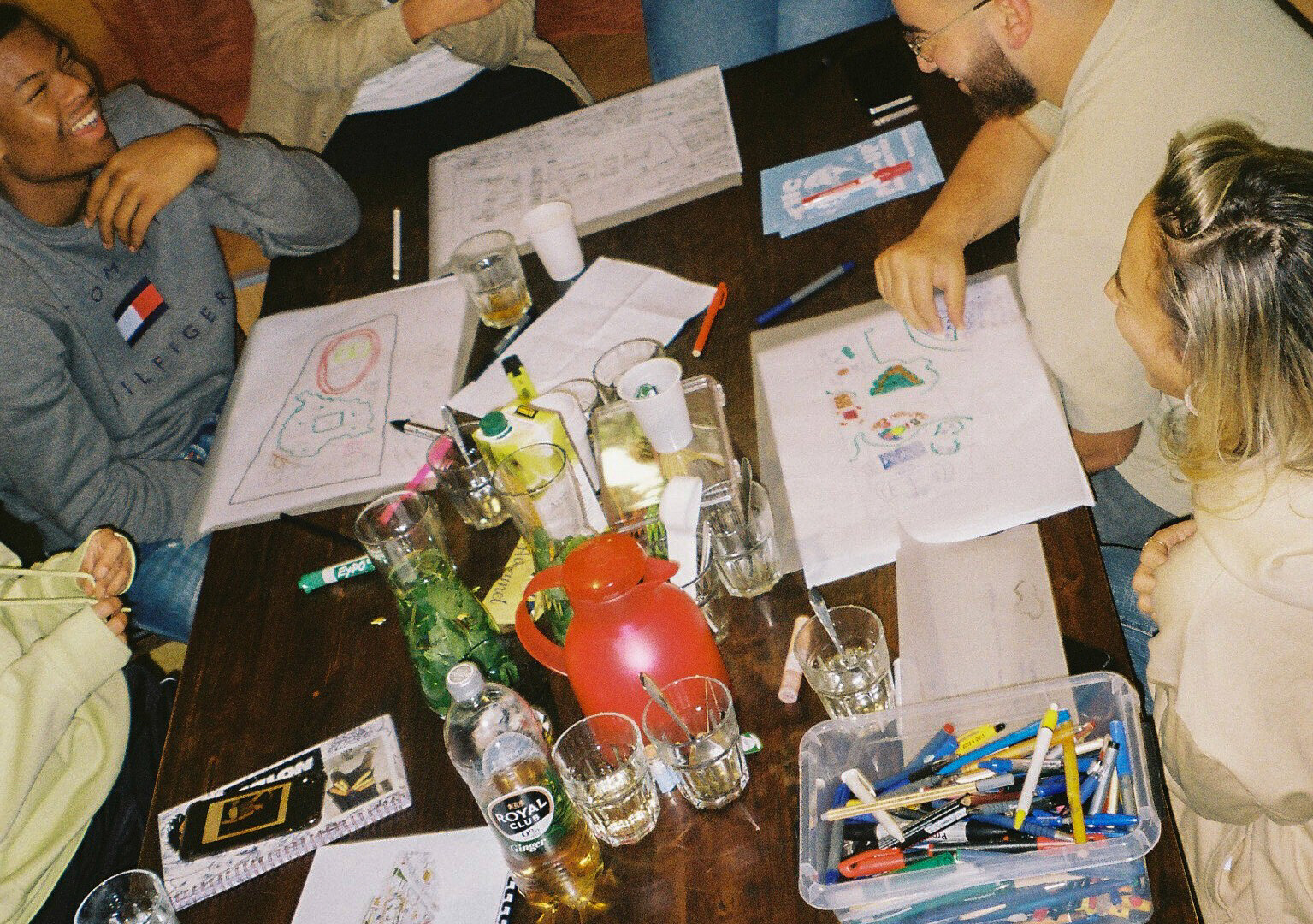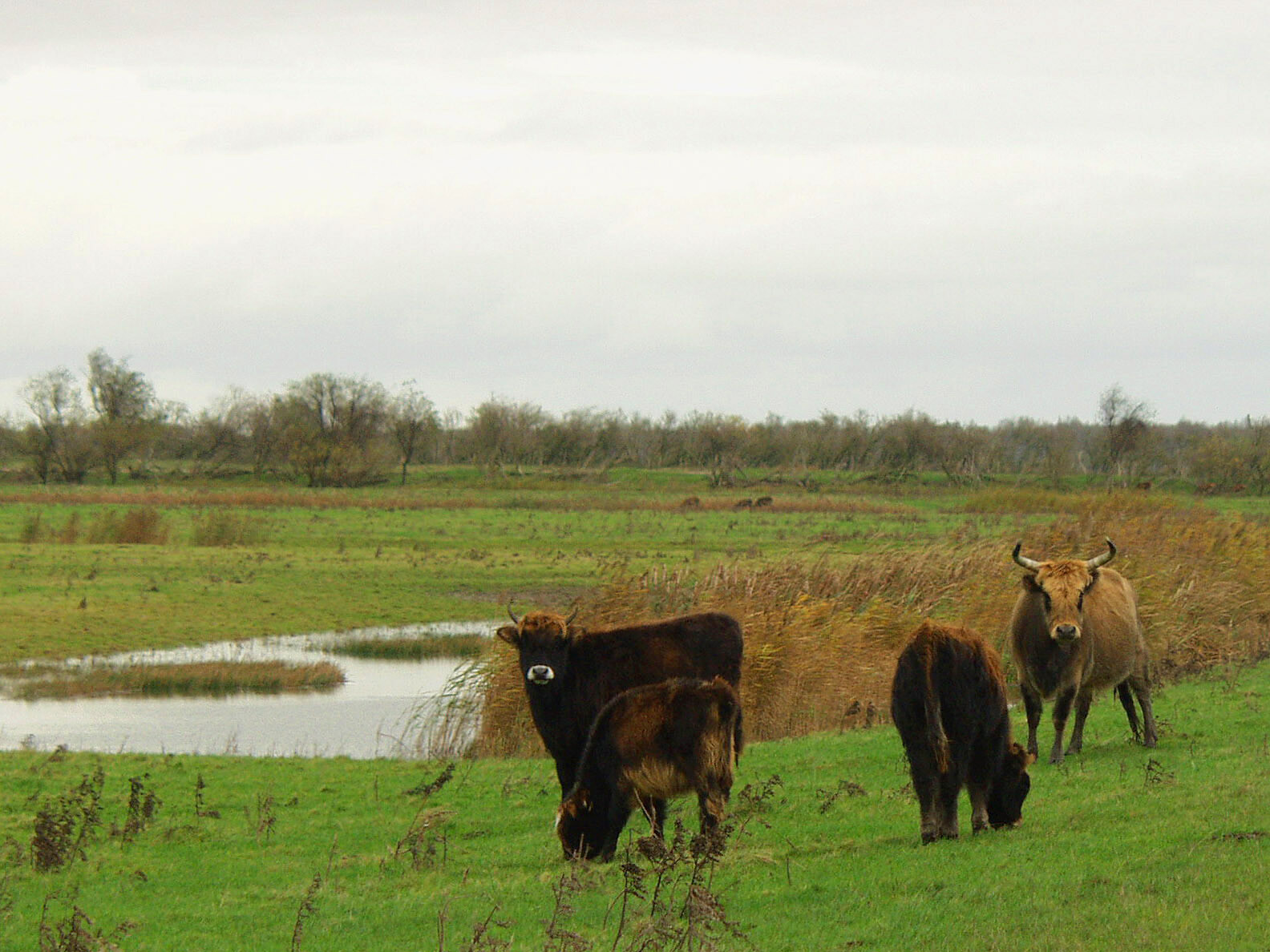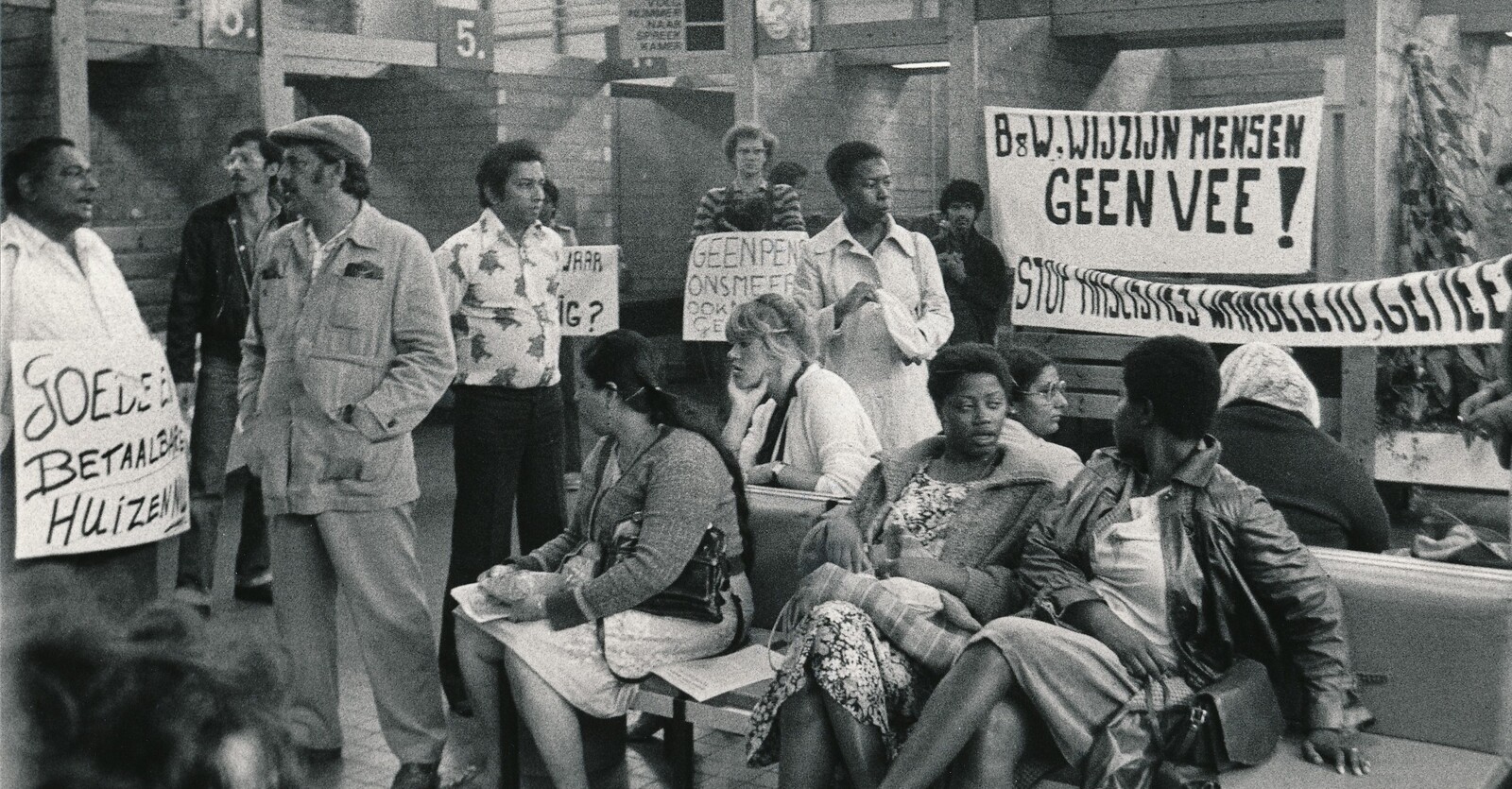Introduction: Earth and the City
About three years ago, I started a presentation at the Annual Meeting of the American Association of Geographers by making a case for “re-earthing” cities:
Earth has been banished from the city. By “Earth” I mean—based on indigenous cosmovisions as much as on insights from contemporary biological and social theory—the radical interdependence of everything that exists, the indubitable fact that everything exists because everything else does, that nothing preexists the relations that constitute it. Earth signals the capacity of life for self-organization, life’s ceaselessly unfolding flux of changing forms, forces, behaviors, and relations, and the fact that entities, processes, and forms are always in the process of dependent co-arising. I take this notion of Earth as the horizon for a renewed living praxis, and as the basis for the essential act of human dwelling.1
I went on to discuss the exile of Earth from the city as a reflection of a twofold civilizational anomaly: the construction of cities on the basis of their separation from the non-human living world, particularly since the classical Greek polis; and the tendency towards the historical deprecation of everything that is not the city, such as all forms of rural life, indigenous and ethnic cultures, nomads, migrants, vagabonds, squatters, and all those who refuse to abide by modern norms and rules of inhabitation. My question was whether this civilizational anomaly could be reversed. In times of civilizational crisis caused by the wearing down of relationality, largely originating in urban life, shouldn’t we look for important clues for rethinking cities in those vilified spaces found at the margins, or beyond the confines, of cities? Today, the project of rethinking, remaking, and re-politicizing urban habitation needs to be undertaken based on the experience of those at the epistemic, ontological, social, and spatial interstices and peripheries of cities, including the more-than-human.
Occidental modes of dwelling have eroded the systemic mode of living based on radical interdependence. It is thus imperative that other modes of dwelling be found, imagined, and designed by incorporating relational modes of living into urban landscapes, within an open and broad communal conception. As I contended back in 2018, doing so would require an ontological reorientation of design, away from its functionalist and instrumental tendencies and towards relational principles and goals. This would imply recasting architecture, urbanism, and urban design as cultural, technical, and political practices for relational and pluriversal forms of inhabiting.
The present-day making and remaking of cities, at a faster pace and at larger scales than ever before, continues to be modelled on outworn spatial frameworks. Where do we go for clues to different paths for the city? This question is currently being explored by the “relational turn” in urban studies, which according to Ash Amin and Nigel Thrift, involves “seeing the world as a constellation of existential assemblages, each requiring ideas, tools, and sensibilities that do justice to their own integrity, rather than to some fiction of a universal standard or objective method.”2 This frame is ably encapsulated by the expression of “seeing like a city.”3 Seeing like a city calls for an on-the-ground epistemology appropriate to urban relational ontologies, including the distributed intelligence enacted by socio-technical systems; staying close to the networks of relations rather than privileging top-down theories, employing methods of observation and intervention appropriate to the “rhizomatic ontology” of the city;4 an ethnographic sensibility driven by a commitment to seeing the city from the spaces of the broken, or the spaces of the expelled;5 and the emergent concern with re-earthing the city, its materiality, and the more-than-human.
Designing as a praxis of worlding in transition
Design is, itself, in crisis within a world in crisis. Hence, we might construe it as a practice in transition at the service of larger socioecological and civilizational transitions. In order to do this, however, we need to consider design as ontological. According to Terry Winograd and Fernando Flores, “We encounter the deep question of design when we recognize that in designing tools we are designing ways of being.”6 Design is ontological in that by designing tools, “We” (humans) design the conditions of our existence. We design tools, and these tools design us back. “Design designs,” is the apt formula given to this circularity by Anne-Marie Willis; “we design our world, while our world acts back on us and design us.”7 This applies to the entire range of objects, tools, institutions, and discourses of human creation. To put it in the context of cities, as former UN Habitat director Joan Clos put it, “we have created the city, but what we have not thought enough about is how the city is recreating us.”8
Design and architecture are wedded to a Cartesian ontology of self-sufficient subjects confronting an external world made up of pre-existing, self-standing objects that we can control at will. The notions of representation, object, and project belong to this ontology. What we know as “objects” arise from the dualist ontology that separates mind and body, observer and observed, humans and nonhumans. Relatedly, the idea of “project,” as Alfredo Gutiérrez puts it, has enabled modern design to “monopolize the relationships with tomorrow” since “the future can only be reached through project, which ends up capturing every possibility of existence, ‘projecting’ over the entire Earth, like a disease, the unique Western world which denies all others. Because for the West there are no other worlds, only unfinished fragments of itself.”9
What would become of design if it were to be based on the fundamental insight that the world does not exist “out there,” separate from us, but that it co-emerges with every one of our actions, albeit within a complex dynamic of causality, contingency, and historical drift? Such an awareness would require a practice of design in which objects, representations, and projects cease to be foundational to the making of life. Instead of a type of design that undermines the relational making of space and things through practices that prioritize measurement, optimization, productivity, efficiency, and control—many of these normalized and enforced at present by an algorithmic rationality—design needs to reengage with the making of life with all of those—humans and not—which are involved in the particular contexts and situations of the designing act.
Ontological metrofitting and the more-than-human city
Dualist and relational ontologies convey diverse forms of being-in-the-world, in space and in territory. In applying these notions to cities, Tony Fry proposes an ontologically oriented framework—which he calls metroffiting—for rethinking and remaking cities after the exhaustion of the European city as design paradigm. Fry’s starting point is the ontological defuturing effect of modern design, by which he means design’s creation of a world-within-the-world that is structurally unsustainable. As a response, he posits a movement of repair towards “Sustainment,” understood as a post-Enlightenment project of a scale as great or greater than the Enlightenment which acknowledges the dialectic of social metabolism, change, and repair:
If, as it is the case, humanity has to adaptively change in order to survive, then there have to be ontologically designing environments that prompt and support this process… As such, [the agenda of metroffiting] has to explore the indeterminacy of the city, its fragmentation, its porous ages, its creative and destructive metabolism, the risks to which it is exposed, what has to be learnt, what can be repaired, and by whom, the politics of change, and the imperative of acting in time… [In sum] the remaking of cities, as action and outcome, is a means of our own remaking.”10
Metrofitting entails the remaking of the city based on the relational worlds on which all life depends. This means seeing the city as a historical and metabolic designing event with which metrofitting has to engage. For Fry, the remaking of the city stands upon its unmaking, which in turn implies an ontological transformation of our being in the world. Consequently, “a far more substantial and foundational strategy of change is needed in which ontological design and metrofitting are elemental—one grounded in the project and process of the Sustainment.”11 The remaking of planning and design in domains such as renewable energy, urban food, transportation, bio-waste management, air and water quality, housing, and so forth will become essential to restoring biophysical balance to urban living. This has to happen in the spirit of newer visions of the city as open, permeable, and always being un- and re-done.
Biophilic urbanism provides another starting point, which involves the massive re-earthing of cities—their infrastructure, activities, knowledge, institutions, and governance.12 Succinctly, biophilic cities are seen as places profusely endowed with easily accessible and abundant nature, capable of enticing residents into integration with nature through multisensory environments. Biophilic design aims at sustainable urban metabolism based on closed-loop philosophies, actively engages in bioregionalism and ecological restoration, and reimagines cities as entities that harbor natural shapes and forms, encompassing diverse types of built structures. All these elements need to be thought about at the levels of building, block, street, neighborhood, community, and region. Even interstices and excessive pavement can provide a means to re-earth the city, including for urban agriculture (e.g., the proliferation of urban gardens and “agrihoods” in Detroit over the past two decades of economic crisis and a new wave of white flight, or, more ambiguously, the recently introduced “superblocks” in Barcelona).
Nonanthopocentric perspectives on the city—taking a stand for reframing the city from the perspective of the living nonhuman—add new dimensions to the relational remaking of cities. The stakes of this are incredibly high, as they involve going beyond what Sylvia Wynter has called the “mono-humanist” view of the human: the human as secular, liberal, and bourgeois, best embodied by the Western white male.13 This anthropocentric and modern/colonial view of Man is the default setting of all types of modern design, including architecture and urbanism. Cultural and social critics rarely take notice that modern Universal Man exists in a designed space. To rethink and remake the city from the perspectives of “the multiplicity of Other”14 and “multispecies urbanism” challenges the norms and forms of the urban environment arrived at historically through anthropocentric mono-humanism. Addressing the dependence of urban freedom for the privileged on the unfreedom of racialized and gendered forms of labor and a whole range of “undesirable bodies” is but a place to start. Other cities, other designs are possible when imagined from the perspective of the multiplicity of others that inhabit it.
This also applies to nonhumans, where a multispecies urbanism finds inspiration in urban plants, soils, and urban and peri-urban agroecology, as they evince practices of care and repair and aims to “defragment landscapes for urban more-than-humans by intentionally maximising the surface and subsurface as habitat and food.”15 Cogent examples of this are present in the visions of Colombian architect Harold Martínez Espinal, whose proposal for “a new fusion of country and city” rests on a deeply relational perspective. His starting point is what he sees as a crisis of habitability stemming from “occidental modes of dwelling” (including urban Latin America). Recuperating our ability for terrestrial habitability requires, for Martínez Espinal, a form of being in the world that overcomes the disembodied and decontextualized way of being created throughout Western history. Crafting other forms of dwelling would involve “collective habits that allow for the creation of cities where the urban is able to fuse as a collective entity with its natural habitat… These would be cities where humans, like the rest of living beings, would exist simply as inhabitants of a living soil, to whom they owe an ethos of reciprocity and complementarity, that is, of associative interaction.”16
Martínez’s vision for “a new fusion between country and city” can be realized through multiple designs. His own architectural and design proposal calls for multistory buildings fitted with corridors with movable shelves for planting foodstuffs (vegetables, herbs, and other plants), and surrounded by food gardens and green areas, with places for collective gatherings. The idea is to establish circulation “from the garden to the corridor and from this to the kitchen and the dining table.” The design is intended to introduce a peasant view of the soil into the city, reconstituting the apartment building and the neighborhood as what could be called rurban territories. Martínez’s vision of rurbanization is based on the notion that “to inhabit is to live communally, crafting and sustaining an environment.”17 His design objective involves “a novel architectural language, capable of carrying out a loving associative interaction with natural landscapes.”18 By linking together habitability, design, space, ontology (relationality), and ultimately, ethics and care, he articulates a cogent framework for urban transitions to the pluriverse. By seeing the human as the inhabitant of a living universe, rather than the occupier of a passive soil, he moves decidedly into a post-dualist conception of the city. His framework constitutes an architectural praxis for transitions based on a renewed commitment to an ethics and aesthetics that stems from the deepest meaning of life itself: relationality.
Six axes for design-oriented socioecological transitions.
The present is an exciting moment for design. It is emerging as a crucial domain for thinking about the production of life and the making of worlds. But the power for making life and constructing worlds have been wrested away from common people. Modernity has entrusted the production of collective life to experts in a process that has been organized by the State and intimately linked with capitalism. The results, while impressive on many grounds (technoscientific and economic development) have been disastrous for humans and nonhumans, as the consequences of anthropocentric ways of producing, consuming, and living are becoming painfully clear.
Current intellectual-activist debates in Latin America suggest six axes or principles for transitions to a nonanthropocentric pluriverse, and many of these can be seen as taking place in many regions of the world. Each of these axes is connected to pressing issues and open questions in social theory, design, architecture, and urbanism, with the overall guiding principle of reclaiming the power over making life based on the awareness of the radical interdependence of all that exist.19
Recommunalize social life: Globalization has been a relentless war against everything communal and collective, a market-driven individualizing force. It is necessary to re-attune the making of life to the communal condition of existence; we exist in communal entanglements that make us kin to everything that is alive. If we see ourselves communally, we cannot but adopt care and compassion as ethics of living. The emphasis on recommunalization might be translated into design guidelines for resilient communities, or in terms of life projects in communities of place that are at once rooted, open, and mobile.20
Relocalize social, productive, and cultural activities: Delocalizing pressures have intensified dramatically with globalization, with dire ecological and social costs. There are multiple ongoing efforts to relocalize activities and reclaim a degree of autonomy over eating (food), learning, healing, dwelling, and energy. This involves transformations of production systems, revaluing the commons, and reweaving ties between country and city, all of which can be tapped into through appropriate designing interfaces.
Strengthen autonomies: A measure of local autonomy is needed to prevent recommunalization and relocalization efforts from being re-absorbed by newer forms of delocalized re-globalization. Autonomy is a radicalization of direct democracy oriented to reconfiguring power in less hierarchical ways and based on principles of sufficiency, mutual aid, and the self-determination of the norms of living. Design can be recentered on the autonomous production of life and livelihoods through designing coalitions that enable selective de-globalization, going back to the notion that every community practices the design of itself.
Depatriarchalize, deracialize, and decolonize social relations: Patriarchal capitalism is naturalized through the concrete designs of the worlds and institutions that we inhabit and that entrap us. To depatriarchalize and deracialize social relations requires practicing a feminist and antiracist politics centered on the collective production and reproduction of life. Actively incorporating this politics into practice is essential for repairing and healing the tapestry of interrelations that make up the bodies, places, and communities that we all are and inhabit, based on interdependence and care.
Re-earth life: Earth is reemerging as a horizon for a renewed living praxis and the basis for the essential human act of dwelling. There are many expressions of the intensely felt need of re-integrating with Earth. The struggle against terricide invites us to imagine different worldings, propitious to the reconstitution of the entire web of life, the sustainment of territories, and communalized forms of economy, wherever we are. From “designing with nature” to newer forms of Earth-wise design and re-earthing cities, design needs to reencounter with Earth, and in some cases, resacralize design.
Construct meshworks among transformative initiatives and alternatives: The convergence of genuinely transformative alternatives from below needs to be encouraged, fostering the creation of self-organizing meshworks, or networks of networks, among them. Such alternatives attempt to break with the dominant system and take paths towards direct forms of political and economic democracy, localized self-reliance, social justice and equity, cultural and knowledge diversity, and ecological resilience.
These axes aim at the creation of dignified lives in rural and urban territories. They are an antidote against destructive globalization and the normative middle-class ways of life, characterized by compulsory individualization, agonizing consumption, and ever deeper heteronomous grafting of digital technologies onto our bodies. Worldwide, middle-class enclaves are offered as the ideal to which everybody should aspire. Their individualizing and decommunalizing effects are nefarious on ecological, emotional, and spiritual grounds. They also often harbor deeply patriarchal, racist, politically conservative attitudes and behavior. Architecture and urban planning face a huge challenge to denaturalize this seductive model and come up with designs that enable social and ecological reintegration, restoring to sociospatial life a measure of meaningful connection to place. As landscape architect and urban planner Randolph Hester wisely put it, explaining the rationale for his notions of “endemic design” and reattachment to place, “attachment to place exerts the most positive influence on the design of community.”21
Brief outline of pluriversal designing
There is no doubt that design has played an important role in the consolidation of an ontology of inherently existing objects, and of individual subjects intent on creating and using them, rendering them into “scarce” commodities, extracting value from them, hoarding and discarding them, turning them into waste, and so forth. Design has contributed hugely to laying down the unjust and exclusionary social orders that naturalize and enact such an ontology. Today, the results are everywhere for all to see in the treatment of most humans, Earth, and life, as objects, by force if necessary, but preferably through biopolitical management, technoscience, politics, and design; and in a world of obscene social inequalities, untold destruction of the Earth, profligate consumption and waste, and a paroxysm of profit making. Can design be seen in support of the life-making and world-making potential of struggles to relocalize, recommunalize, and re-earth social life? What would it mean to design outside the hegemony of the liberal, secular, and rationalistic ontology of capitalist modernity?
Designing practices based on the fundamental insight that the world does not exist “out there,” separate from us, but that we construct it with every one of our actions should contribute to disrupting those worlding practices that make the world one. Making (designing) pluriversally fosters forms of objectless-oriented and non-representational designing that challenge the power of a globalizing economy where only One World and One Human fit. Such designing practices would forcefully contribute to transitioning to the pluriverse, or a world where many worlds fit, with a multiplicity of others and all living forms. Let’s consider, to end, the following set of propositions on designing from, in, and for the pluriverse:
1) Designing pluriversally means designing with/in/from a world of many worlds, with an active awareness that constructing worlds under the premise of ontological separation negates the possibility to exist and thrive to what is ontologically different.22
2) Designing pluriversally implies designing relationally, or based on the premise that life is constituted by the radical interdependence of everything that exists.
3) Designing pluriversally places in parenthesis the modern notions of representation, object, and project, opening possibility to non-representational, non-object centered, and non-projectual designing praxes.
4) Designing pluriversally works for the reconstitution, healing, and caring for the web of interrelations that make up the bodies, places, cities, and landscapes that we are and inhabit.
5) Designing pluriversally is mindful of the conditions of generalized individuation, de-localization, de-communalization, and de-placing effected by modern forces, including urbanism and planning. Conversely, it contributes to the recommunalization of social life and the relocalization of activities such as eating (vs. “food”), healing (vs. “health”), learning (vs. “education”), dwelling (vs. “housing”), and livelihood provisioning (vs. “economy”).
6) Designing pluriversally aims to heal the ontological uprootedness from body, place, and landscape through forms of making that contribute to re-embodying, re-placing, and re-earthing life.
7) Designing pluriversally means regaining the capacity for making life autonomously, instead of outsourcing it to institutions, experts, the State, and the capitalist economy. It strays away from a world centered on dualistic being and having—the historical project of objects/things—while favoring the historical project of relations and of dwelling in place.
8) Designing pluriversally fosters a departure from anthropocentrism, figuring conditions for all earth-beings to flourish. It instills a sense of being at home in a world that is alive, creating spaces for re-imagining ourselves as pluriverse and as community.
9) Designing pluriversally contributes to dismantle the mandate of masculinity that is at the core of the object-driven ontology of modernity. It practices a feminist and anti-racist politics that pragmatically privileges collective and communitizing modes of making and acting centered on care.
10) Designing pluriversally takes seriously the struggles for social justice, respect for the Earth, and the rights to life and being of human and non-human entities.
11) Designing pluriversally involves learning to think and make with those who rise in defense of their life territories, strengthening their life-making and autonomy-oriented practices.
12) Designing pluriversally requires a renewed awareness of how the creation of conditions for life-sustaining co-existence will necessarily have to engage with the dominant logic of unsustainability and defuturing.23
13) Designing pluriversally understands that it needs to go beyond the grammar of “problems” and “solutions,” particularly as it pertains to civilizational challenges such as climate change, which are “ontologically unframeable, unthinkable and incalculable.”24
14) Designing pluriversally resists translating the inexhaustible reservoir of non-representational practices into the grammars of modern design, letting them come into the foreground as instances of the relational making of life.
15) Designing pluriversally renders the project of re-earthing cities into a historically plausible, intellectual, political, and technical process under the rubric of creating spaces of healing, re-communalization, and mutually enhancing relations with the Earth.
16) Designing pluriversally contributes to civilizational transitions from toxic to healing existence. This reorientation will take a lot of work, and only slowly will pluriversal designers discover the considerable potential of acting from interdependence and care.
17) Designing pluriversally has as a general goal mobilizing for a new way of dwelling on the Earth.25
Arturo Escobar, “Habitability and Design: Radical Interdependence and the Remaking of Cities.” Geoforum, no. 101 (2019): 132-140, 2019, p. 132.
Ash Amin and Nigel Thrift, Seeing Like a City (Cambridge, UK: Polity Press, 2019), 31. Some of the main works associated with this turn include AbdouMaliq Simone and Edgar Pieterse, New Urban Worlds. Inhabiting Dissonant Times (Cambridge, UK: Polity Press, 2017); AbdouMaliq Simone, Improvised Lives. Rhythms of Endurance in an Urban South (Cambridge, UK: Polity Press, 2019).
Mariana Valverde, “Seeing like a city: the dialectic of modern and premodern ways of seeing in urban governance,” Law and Society Review 45, no. 2 (2011).
Laura Forlano, “Decentering the Human in the Design of Collaborative Cities,” Design Issues 32, no. 3 (2016): 165. See also Laura Forlano, “Posthumanism and Design,” She-ji. Journal of Design, Economics, and Innovation 3, no. 1 (2017): 16–29.
Tony Fry, City Futures in the Age of a Changing Climate (London: Routledge, 2017); Saskia Sassen, Expulsions. Brutality and Complexity in the Global Economy (Cambridge, MA: Harvard University Press, 2014).
Terry Winograd and Fernando Flores, Understanding Computers and Cognition (Norwood, NJ: Ablex, 1985), xi.
Anne-Marie Willis, “Ontological Designing: Laying the Ground,” Design Philosophy Papers 13, no. 1 (2006): 80.
Richard Sennett and Joan Clos, “A Conversation.” In UN Habitat and Richard Sennett eds., The Quito Papers and the New Urban Agenda (New York: Routledge, 2018), 167.
Alfredo Gutiérrez Borrero, “When Design Goes South: From Decoloniality, through Declassification, to Dessobons.” In Tony Fry and Adam Nocek eds., Design in Crisis. New Worlds, Philosophies and Practices (London: Routledge, 2021), 56–74.
Fry, City Futures, 16.
Ibid., 123.
I adopt the term “re-earthing” from Timothy Beatley, Biophilic Cities. Integrating Nature into Urban Design and Planning (Washington, DC: Island Press, 2011), and Handbook of Biophilic City Planning and Design (Washington, DC: Island Press, 2016), although I take it in an explicit ontological way. Beatley retains a certain naturalized notion of nature as separate from humans, and in this way his proposal goes halfway towards re-earthing visions based on radical interdependence. The same can be said for the large handbook of urban ecology, taken as a whole: Ian Douglas et al. eds., The Routledge Handbook of Urban Ecology (London: Routledge, 2021). There is a need for urban studies to broach in earnest the question of the nonhuman specific to the cities, reimagining cities as living entities through ontological metroffiting.
Sylvia Wynter, “Unparalleled Catastrophe for Our Species?” In Katherine McKittrick ed., Sylvia Wynter: On Being Human as Praxis (Durham: Duke University Press, 2015), 9–89. For a discussion of Wynter’s concept, see Arturo Escobar, “Reframing Civilization(s): From Critique to Transitions,” Globalizations (November 30, 2021), ➝.
Afaina de Jong, “The Multiplicity of Others,” Who is We? (2021), ➝.
Debra Solomon, “A Multispecies Urbanism Manifesto,” Who is We? (2021), ➝.
Harold Martínez Espinal, Del hábito, al hábitat y al habitar (Cali: Editorial Universidad del Valle, 2016), 22. The full architectural and design proposal can be found in Grupo CU:NA, La fusión campo-ciudad desde un nuevo concepto de vivienda (Cali: Editorial Universidad del Valle, 2021), coordinated by Harold Martínez and the architect Verónica Iglesias García. See Escobar, “Habitability and Design” (2019) for a fuller discussion. Martínez Espinal did a graduate program at the Bouwcentrum Rotterdam in the 1970s.
Harold Martínez Espinal, Habitabilidad terrestre y diseño (Cali: Universidad del Valle, 2013), 156.
Espinal, Del hábito, 21.
This is a very short rendition of a much longer argument. For a complete set of references, see Arturo Escobar, “El pensamiento en tiempos de pos/pandemia.” In Olver Quijano, ed., Pandemia al Sur (Buenos Aires: Prometeo Libros, 2020), 31–54; Arturo Escobar, Designs for the Pluriverse: Radical Interdependence, Autonomy, and the Making of Worlds (Durham: Duke University Press, 2018); Arturo Escobar, Michal Osterweil, and Kriti Sharma, Designing Relationally: Making and Restor(y)ing Life (London: Bloomsbudy, forthcoming).
The notions of life projects and communities of place are found in Latin American activist literature, as well as in Ezio Manzini, Design when Everybody Designs (Cambridge, MA: MIT Press, 2015) and Politics of the Everyday (London: Bloomsbury, 2019). The term “design coalitions” is also Manzini’s.
Randolph Hester, “Reattach! Practicing Endemic Design.” In Lynn Manzo and Patrick Devine-Wright eds., Place Attachment (London: Routledge, 2021), 208.
I have developed this set of propositions with Marisol de la Cadena. See Marisol de la Cadena and Arturo Escobar, “Notes on Ontological Excess: Towards Pluriversal Designing.” In Martín Tironi ed., Resonancias tectónicas desde el Sur: Del diseño centrado en el usuario al diseño centrado en el planeta (2021). See also Escobar, Osterweil, and Sharma, Designing Relationally.
Tony Fry, Defuturing: A New Design Philosophy (London: Bloomsbury, 2021).
Bayo Akomolafe, “What Climate Collapse Asks of Us,” 2020, ➝.
This formulation guides the current work of a small group that includes Fernando Flores, Terry Winograd, Don Norman. B. Scot Rouse, and Arturo Escobar, gathered around the formative insights of computer network technologies and design originally formulated in the book by Winograd and Flores, Understanding Computers and Cognition (1985).
Where is Here? is a collaboration between Het Nieuwe Instituut and e-flux Architecture following Who is We?, the Dutch pavilion at 2021 Venice Architecture Biennale.
